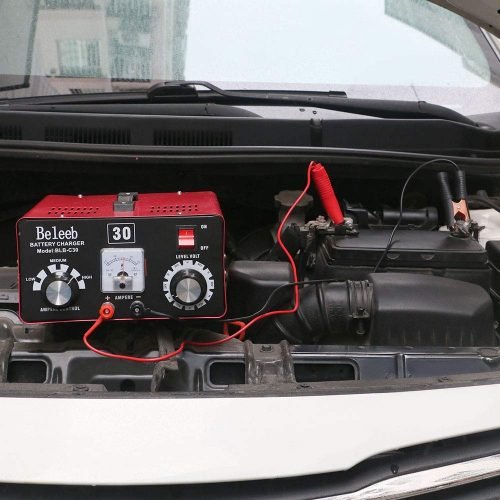12 Best Desulfator Battery Charger On The Market 2021 (Master Reviews & Buying Guide)


It’s a hot summer day, and the sun is high in the sky. You get into your car and turn on your AC, but the air that comes out is weak and warm.
That is a scenario no one wants to get caught in, but it is all too familiar. It happens when the car battery cannot hold a charge as it used to. Sulfation is the most common cause of battery failure.
Lead acid batteries are one of the popular battery types currently in use, and unfortunately, they are the frequent victims of sulfation.
Sulfation causes a depreciation of a lead-acid battery and can ultimately lead to complete battery breakdown. However, the desulfator chargers can reverse it.
This article gives you a thorough review of 12 battery desulfators and their functions, frequently asked questions, and a buying guide.
You also get a breakdown of the causes of sulfation to a lead-acid battery, how to avoid it, and how to properly use a desulfator charger.
Best premium
BatteryMINDer Model 128CEC1-AA-S5
- Seven stages of charging
- Integrated auto-temp sensor
- High energy efficiency
- Suitable for a wide range of 12v batteries
Our Top pick
BatteryMinder 128CEC1
- 12V with a selection of 2, 4, and 8 amp chargers
- Regulates the charge
- Prevents overcharging
- Spark protection
best overall
12V 2A 4A 8A batteries desulfator
- Fully automatic 12 volt battery desulfators
- Overheating protection
- Protects against reverse-polarity
- Spark-free operation
Top 12 Best battery Desulfator On the market (Table Of Comparison)
The table below shows the summarized of car battery comparison of the Best Desulfator BatteryCharger for your easy reference.
However, the positions are in no particular order of importance on top rated battery desulfators review, desulfator brands and ratings.
This enable anyone to choose the most suitable desulfator battery charger on the market that suit your needs.
| PRODUCT | FEATURES | OUR RATING |
|---|---|---|
 
1. Battery MINDer 128CEC1(Our Top Pick) |
|
EDITOR’S CHOICE 4.9 / 5.0 Price : $ $ $ |
 
2. BatteryMINDer Model 2012 |
|
4.7 / 5.0 Price : $ $ |
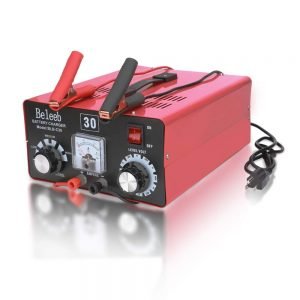 
3. Beleeb Battery desulfator |
|
4.1 / 5.0 Price : $ $ |
 
4. Pulsetech Xtreme Auto Charger |
|
4.4 / 5.0 Price : $ $ $ |
 
5. BatteryMINDer Model 128CEC1-AA-S5 |
|
4.8 / 5.0 Price : $ $ |
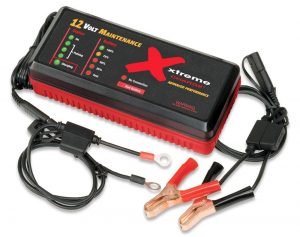 
6. XTREME CHARGE XC100-P |
|
4.5 / 5.0 Price : $ $ |
 
7. TecMate TM-341DUAL OptiMate |
|
4.2 / 5.0 Price : $ $ |
 
8. Battery Life Saver 48BW BLS |
|
4.3 / 5.0 Price : $ $ |
 
9. Save A Battery 2365-36 desulfator |
|
4.7 / 5.0 Price : $ $ |
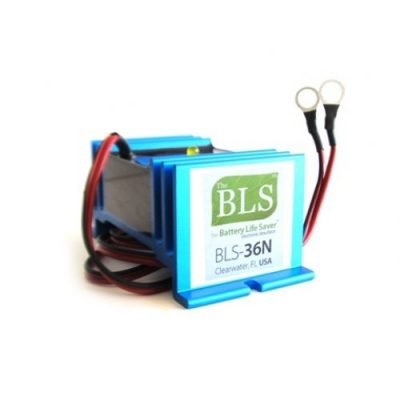 
10. Battery Life Saver 36N BLS |
|
4.6 / 5.0 Price : $ $ $ |
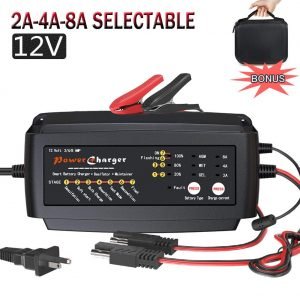 
11. 12V 2A 4A 8A Battery amp |
|
4.3 / 5.0 Price : $ $ |
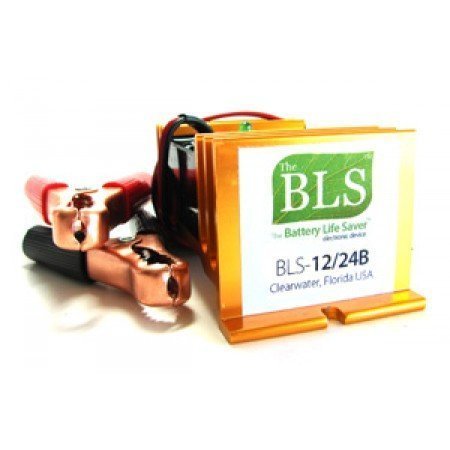 
12. Battery Life Saver 12/24BW BLS |
|
4.6 / 5.0 Price : $ $ |
Top 12 Best desulfator batteries charger For The price
1. BatteryMINDer 128CEC1 – the best Battery desulfators
The BatteryMinder 128CEC1 is a versatile battery desulfator that can be used on a car, motorcycle, and truck batteries. It has 3 amp configurations that cater to different type of batteries.
The 2 amp setting is for regular charging, the 4 amp is for large deep cycle batteries, and the 8 amp configuration is for AGM batteries.
This product desulfates your lead-acid battery at every amp configuration, and it is regulated, so you don’t overcharge or undercharge your battery regardless of the amp configuration.
You can also use it under extreme temperatures that are still considered safe due to its ambient temperature sensor. At the price tag, this battery performs more than you would expect.
Read More
Specification
- 12V With A Selection Of 2, 4, And 8 Amp Chargers
- Regulates The Charge
- Prevents Overcharging
- Suitable For Use Under Extreme Temperatures
- Integrated Temperature Sensor
- Spark Protection
- Maintains Eight Batteries At A Time
- Thermal Runway Protection
- Extends Lead-Acid Battery Usage
- FCC Certified
Pros
- Suitable for all lead-acid batteries, including deep cycle and AGM batteries
- It can maintain multiple batteries at a time.
- It has different settings for different batteries.
- It prevents overcharging and undercharging.
- It has protection from thermal overload.
Cons
- The price is on the high side.
2. BatteryMINDer Model 2012 best battery desulfators
This charger desulfator is run by a microprocessor that controls and maintains the charger and battery throughout the process. It also ensures that the battery is precisely charged.
You can also recondition weaker batteries and take full advantage of the battery extra capacity and life.
The charger has seven stages of charging, after which the lead-acid battery ends up completely desulfated, and extends battery usage. You can use this charger under extreme temperatures, as long as they fall under the required temperatures for lead-acid accumulator charging.
The LED display shows the status of the battery, allowing you to monitor the process. You can use this charger on any standard 12 volt battery, regardless of the size.
Read More
Specification
- Powered By SmarTECHnology Microprocessor
- Entirely Automatic With A Seven Stage Of Charging Process
- Runs Without Buttons (Plug’ N’ Run)
- Comes With LED Displays
- Battery Voltage And Amperage Monitor
- Ambient Temperature Sensor
- Automatic High-Frequency Pulse Desulfation
- Maintains Six Batteries At A Time
- Extends Batteries Life Up To Four Times
- Reconditions Weak Batteries
- Tests Batteries For Lead-Acid Battery Breakdown
Pros
- Energy-efficient
- Low operational costs
- Suitable for most 12 volt batteries
- FCC certified
- Ensures accurate charging and maintenance
Cons
- It doesn’t charge low batteries.
3. beleeb best battery desulfators
This desulfator from Beleeb has a fully automatic operation that doesn’t require you to monitor it.
Once it desulfates your lead-acid battery, it has an automatic switch that shuts it off to avoid overcharging. The LED display shows you the battery’s status at every step.
You get a wide range of use from this one battery as it can charge 12V to 72V batteries with no effort, and of different types.
That is a good thing for people who own multiple vehicles because they can have one battery maintenance for everything.
Read More
Specification
- Multipurpose Trickle Battery Maintenance
- Adapted For 12V, 24V, 36 V, 48V, 60V, And 72V Batteries
- Trickle Charger For Desulfation
- Suitable For Almost All Lead-Acid Batteries, Including Lithium Batteries
- Charge Speed Adjusting Knob
- Inbuilt Battery Maintenance Test Kit
- Amp Meter For Testing Charged Batteries
- Inbuilt Cooling Fan
- Overload Button
- Three Years Warranty
Pros
- It has a temperature-controlling fan.
- You can charge a wide range of batteries
- It has an overload button to avoid overcharging.
- It can test your car lead acid battery before and after desulfation.
Cons
- It isn’t an automatic charger.
4. Pulsetech Xtreme Auto battery Chargers, Black/Red
The Pulsetech battery desulfators Xtreme charger is the most efficient pulse charger for lead-acid batteries. It is perfect for bulk charging and maintenance of new cells, tests, and desulfation.
The variable float charge system in this charger helps improve the battery’s condition and prevents overcharging of the battery.
You can use this charger on most 12v batteries without worry because the operation is efficient and effective on batteries. It doesn’t spark when exposed, and it extends your battery life.
Although you may be required to plug it in, you’ll see a big difference in your lead acid battery’s performance after using this charger.
Read More
Specification
- Desulfating Battery Bulk Charger
- Built-In Tester
- Available For 12V, AGM, VRLA, And Flooded Cells
- Float Charge For Better Battery Strength
- Overcharge Safety Protection
- Spark Protection And Current Limiting Protection
- High Current Desulfating Pulses
- Temperature Protection
Pros
- The price is reasonable.
- It has temperature control.
- It is perfect for different batteries.
- You can test your lead-acid battery before and after the desulfation process.
Cons
- It only works for 12 Volt batteries.
5. BatteryMINDer Model 128CEC1-AA-S5
This BatteryMinder model is the most expensive charger on our list, and it has good reason to be. It has seven stages of desulfating, which are almost entirely automatic.
This means you don’t need to monitor it regularly. It even comes with a temperature sensor installed.
The charger is very energy-efficient. It is also a perfect maintainer and not just a battery desulfators. You can monitor the charging process using the multiple LED displays that are available, and you don’t have to test the lead acid battery yourself.
The charging process is a bit faster than a lot of other pulse chargers but just as effective.
Read More
Specification
- Maintainer-Desulfator Battery
- Seven Stages Of Charging
- Integrated Auto-Temp Sensor
- LED Monitors That Show The Status Of The Battery
- Inbuilt Battery Test Kit
- High Energy Efficiency
- Suitable For A Wide Range Of 12 Volt Batteries
- CEC Approved
Pros
- It is very energy efficient.
- It charges the battery efficiently and in a short time.
- It charges and maintains Aviation Concorde batteries perfectly.
- The temperature and other controls are displayed on the 12 LED monitors.
Cons
- It can only charge 12 volt batteries.
6. XTREME CHARGE XC100-P desulfator
The Xtreme Charge XC100-P desulfates, maintains, and bulk charges batteries. While it is only designed for 12 volt batteries, you can use it as a flooded, VRLA, and an AGM battery desulfation charger.
It has a microprocessor that controls every operation and measures all the parameters that make an excellent charging process.
It uses the variable float charge system, which boosts a battery’s charge rate and improves its life.
You don’t have to worry about overcharging as it shuts off automatically, and it also comes with battery clamps.
Read More
Specification
- 12V Desulfator Chargers
- Maintainer And Bulk Charger
- 2.5 Amps Pulse Current
- Microprocessor Technology For Appropriate Charging
- Variable Float Charge To Improve Battery Condition
- Overcharge Safety Protection
- Comes With Fuse-Protected Clamps
- LED Indicator Panels
- Ideal For Different Lead Acid Batteries
Pros
- It is budget-friendly.
- It assesses and tests batteries before and after desulfation.
- The voltage and current are correctly measured to avoid overcharging.
- The charger restores battery power and maintains it.
Cons
- At 2.5 amps, it may charge too slowly for batteries that need fast charging.
- It doesn’t have temperature protection.
7. TecMate TM-341DUAL OptiMate 4DUAL 1 Amp Weatherproof Desulfating Charger/Maintainer
The OptiMate battery desulfators combine a desulfator, tester, maintainer, and charger into an all-in-one weatherproof package. This charger has all you need for proper battery care and maintenance.
It has a dual program that keeps your battery at optimal health after the battery desulfation process.
You have a good chance of reversing serious sulfation in weak batteries with the low voltage pulse recovery system of this charger. The restore battery life is extended by 400%, and the performance improves.
The microprocessor runs everything, and you can follow the process with the LED displays on the charger.
Read More
Specification
- 12V All-In-One Charger And Maintainer
- 4 Dual Program Charging And Maintenance
- Keyless Activation
- Low Voltage Pulse Recovery
- Waterproof Packaging
- High Energy Efficiency
- Extends Battery Life By 400%
- Microprocessor Operation
- LED Displays
- Two Charge Options
Pros
- It has an affordable price.
- It successfully tests, maintains, and charges heavily sulfated batteries.
- The lead acid battery life is extended by up to 400%.
- It is waterproof.
- It is not very expensive.
Cons
- The instructions on the manual are quite complicated.
- It cannot revive a dead battery.
8. Battery Life Saver 48V BLS-48BW Battery System Desulfator
Battery Life Saver, with its patented square wave technology, makes some of the best desulfator available. This technology can lengthen your battery’s life due to its work preventing sulfation in the lead acid battery cells.
It is designed for 48V battery structures, and it is typically used alongside solar or wind battery depositories.
You can also revive old batteries and give them a new life, and maintain brand new batteries.
It is available for every step of battery care, and you’ll notice your vehicle work faster and more efficiently.
Read More
Specification
- Lightweight 48V Desulfator Chargers
- Innovative Square Wave Technology
- Suitable For Weak Batteries
- Maintains Batteries That Are In Good Form
- Auto Shut-Off
- Ideal With Solar And Wind Battery Bank
- Extends Lead Acid Battery Usage Up To Three Times
- Prevents Sulfation
- Stops Slowdown Of Vehicles
- Comes With Four-Foot Wires And O-Rings For Mounting
Pros
- It can extend your battery’s life.
- It rejuvenates weak and nearly dead batteries.
- It can maintain good batteries to improve their effectiveness.
- The charger prevents sulfation.
Cons
- It is difficult to mount.
9. Save A Battery 2365-36 desulfator Charger
Save a desulfator charer are known for their well-built and excellent quality make. This 36V desulfator and battery maintainer keeps your battery working like new even after months of use.
It has a unique cabling system that allows it to connect to any lead acid battery or vehicle with ease.
Using this charger saves you a lot of future stress because it actively averts sulfation when connected, and a smart microprocessor controls all its functions.
It protects your battery from damage caused by reverse-polarity, sparks, or overcharging.
Read More
Specification
- 36V Charger And Maintainer
- Operated By A Microprocessor
- Suitable For Multiple Batteries
- Advanced Computer Controls And Display
- A Unique Modular Cabling System
- Programmed Pulse Desolator
- Energy-Efficient And Eco-Friendly Charging Process
- Overcharge Protection
- Exclusively Automatic Functions
- Sparkles Operation
- Ideal For Outdoor Use
Pros
- The charger can track every individual battery’s status when charging multiple batteries
- It is very portable and easy to use.
- It can connect to any lead acid battery due to the modular cabling system.
- It charges batteries faster than most other chargers.
- It prevents the buildup of lead sulfate.
Cons
- It doesn’t have a long shelf-life.
- It tends to overheat during use.
10. Battery Life Saver 36V BLS-36N Battery System Desulfator charger
This desulfator charger is designed for 36V batteries, especially for golf carts and boats. These types of batteries generally go through a lot of abuse, which is why this sturdy charger is perfect for them. It is mounted fulltime to maintain these batteries and keep them new.
The lives of these batteries are extended more than twice the expected length, and they perform better. Due to the constant maintenance, the batteries are protected from heavy sulfation.
You can also use it to revitalize old batteries and vehicles. There is a low voltage shut-off switch that turns off the charger when not in use to avoid drainage of the battery.
Read More
Specification
- 36V Desulfator Charger
- Permanently Mounted To Maintain The Batteries
- Extends Battery Usage
- Uses Square Wave Technology
- Prevents Sulfation
- Averts Slowdown Of The Vehicle
- Low Voltage Auto Shut-Off
- Refurbishes Efficient Functioning In Any Electric Vehicle
Pros
- This battery is especially suitable for trolling boat motors.
- Extends battery usage
- Prevents the buildup of lead sulfates
- Stop slowdown of the vehicles
- Revitalizes old batteries
Cons
- The price is on high side.
11. 12V 2A 4A 8A Battery desulfator Maintainer Portable Auto Trickle Float Deep Cycle charger
This fantastic budget find from Leicestercn gives you a versatile function at a much lower price than similar chargers.
It has seven fully automatic stages of charging a battery, and it can all be monitored on the multiple LED indicators.
This charger is easy to use, and it has clear instructions an indicators. It allows you to maintain your good batteries, while it can repair a severely sulfated battery.
Your battery is protected from overheating, reverse-polarity, short-circuiting, and overcharging.
Read More
Specification
- Fully Automatic 12V Desulfator Charger
- Three Amp Settings
- Descriptive LED Indicator Displays
- Overheating Protection
- Protects Against Reverse Polarity
- Overload And Short Circuit Prevention
- Ambient Temperature Sensor
- Spark-Free Operation
- Suitable For Outdoor Use On Different Battery Types
Pros
- It is very affordable.
- The instructions are quite clear, and it is easy to use.
- It can bring a severely sulfated battery back to life.
- It has a low power input, and it is very efficient.
- It is waterproof and dustproof.
Cons
- It is cheaply built and doesn’t always last.
12. battery Life Saver BLS-12/24BW 12 and 24V Battery System Desulfator
Battery Life Saver produces top-notch battery accessories, and the BLS-12/24BW model is close to the top. The charger is designed for 12V and 24V batteries, and it is typically used with solar battery bank.
This charger uses high-frequency currents to dissolve lead sulfate crystals into the lead and sulfuric acid.
You can also use this multipurpose battery to maintain the batteries you’re currently using to boost its performance and shelf life.
Old cells are not only desulfated but also rejuvenated by this charger. The charger also saves power for you, and you make the most out of the available power in your battery.
Read More
Specification
- 12V And 24V Desulfator Chargers
- Designed For Solar And Wind Battery Bank
- Uses High-Frequency Currents
- Rejuvenates Old Batteries
- Maintains Good Batteries
- Averts Sulfation
- Extends Battery Usage
- Comes With Alligator Battery Clips
- Five-Year Warranty
Pros
- It lengthens a battery life.
- It revitalizes weak cells.
- It maintains good batteries to improve their performance.
- It prevents the buildup of lead sulfates.
Cons
- The price is on high side
Best Battery desulfator
Buying Guide
Ignoring sulfation in your battery can cause early damage to that battery. Fortunately, it can be easily reversed using a compatible and powerful battery desulfators.
These chargers can restore your battery to normal by dissolving the sulfate that ends up stuck on the batteries.
Desulfator chargers work with electronic pulses, which can dissolve the hardened sheets of sulfate when used at high frequency pulses.
However, as in all products, different factors can determine the effectiveness of the battery desulfators, and assist you in finding the right desulfator chargers according to your car battery.
Lead battery chargers
The ideal desulfator chargers should be able to charge all lead acid batteries at high voltages, regardless of the battery.
Sulfation can only be removed if the desulfator, or regenerator, can match high voltages of up to 24V to 30V.
Monitoring
Desulfation doesn’t happen immediately, so your battery desulfator should be able to monitor the condition and improvement of the battery during the process.
Some chargers come with an LED screen so you can observe the ongoing process.
Usually, desulfation takes anything from three days to a week, depending on the extent of the sulfation. Monitoring this process will ensure that the battery doesn’t overcharge, and the desulfation is done correctly.
Nowadays, some modern desulfator come with regulators to prevent overcharging.
Testing kit
A desulfator that comes with a testing kit can save you time, money, and energy. A battery desulfator kit can be used to test your battery before and after the desulfation process.
Some levels of sulfation are so high that they cannot be reversed. Hence, it is wise for you to test your battery before the process to ensure that you can use it.
After the desulfation process, it is essential to use the test kit to ensure that the sulfation is entirely removed.
If there is still some lead sulfate residue left, the battery may not work as well as it should work.
High-frequency currents
The whole process of desulfation works by passing high electrical currents through the battery which is sulfated in pulses.
That said, a good desulfator should be competent enough to produce a high amount of current that can get rid of the buildup of lead sulfate even in big batteries.
Durability
One of the significant questions we ask ourselves before purchasing a product is ‘how long will this last?’. The longevity of a re-generator rests solely on the manufacturer and the quality of parts used in producing it. Longevity is also affected with how the user understand the product description on how to desulfate the battery.
Most times, it is safer to go for a product that comes from a trusted manufacturer. However, some newer companies provide similar or superior products. Always ensure you read through a product’s description and also its reviews.
price
The price of any product is most times closely linked to its quality and efficiency. Sometimes the extra features and versatility can increase its price tag, too.
In some cases, the cheaper product may work better and give you more for less money. However, you will have to shell out a good amount of money to get that perfect product.
The best thing to do before shopping is to have a preset and realistic budget. You should also have an idea of what features you can live without.
For instance, if you already own a DIY battery desulfator kit, then there’s no reason for you to spend more money buying a battery desulfator that comes with one.
Also, note that the expensive models tend to last longer and are generally better made than the cheap models.
What is a sulfated battery?
A sulfated battery is a battery that has undergone the process of sulfation. Sulfation happen when the lead sulfate contained in the battery settles over the lead plates preventing it from functioning correctly.
When a battery is sulfated, it doesn’t work the same way, and in many cases, stops working completely.
Sulfation is one of the most common causes of battery breakdown in lead acid car batteries, and it affects all cells regardless of age.
Nevertheless, if it is located early, you can desulfate the battery yourself using different techniques and equipment. Otherwise, the damage may be too permanent to reverse.
Sulfated battery symptoms
When you have a sulfated battery, you will start to notice specific symptoms that tell you your battery is bad, such as a reduction in efficiency. These are some more signs that you shouldn’t ignore as a car owner before knowing how to restore the battery.
- The battery stops charging correctly: One of the first signs you’ll notice is that your battery will stop charging fully, or it stops from charging at all. Sometimes it will take a lot more time than usual to get fully charged.
- Your electronic appliances don’t work properly: If you notice your AC, radio, or headlights aren’t performing up to par, then your battery has become sulfated. The AC becomes weak, the headlights become dim, and the radio doesn’t sound quite right.
- The battery discharges faster: If you notice that your battery doesn’t hold a charge for the same length of time as it used to, there is a chance that your battery might be sulfated.
The process of sulfation or what is a battery desulfator?
Now, some people will tell you that as long as you don’t use your battery frequently, you can avoid sulfation, but that isn’t true. Sulfation occurs on basically every lead acid battery, whether it’s in use or not. How does a battery desulfator work will always come into our mind and how effective.
Currently, the majority of the car batteries available today are lead acid batteries, or wet cells batteries as they are sometimes called.
These batteries contain lead plates that also contain lead oxide and are floating in a pool of a liquid electrolyte, which is sulfuric acid.
Each battery has positive and negative lead plates. The number of lead plates contained in each battery is dependent on the number of cells and the voltage of the said battery.
For example, a 12 volts car battery with plates producing 2.2 volts of electricity will contain six lead plates making a total of 13.2 volts when the battery is at its fullest charge.
Car batteries are powered due to a series of reactions that take place between the lead oxide, sulfur, and oxygen that are present in the sulfuric acid.
Each reaction produces electrons that produce a positive charge and powers up your battery, producing lead sulfate at the same time. Lead sulfate is also produced when the pure lead in the lead plates reacts with the sulfuric acid.
The concentration and density of the lead sulfate in the cell increase as the battery discharges. The lead sulfate is left to reach critical mass when the battery has discharged at about 75%.
In that case, it will precipitate out of the electrolyte mixture, forming lead sulfate crystals that gather on the surface of the lead plates. If you charge your battery immediately, the crystals dissolve back into the solution, and all is well.
The real problem starts when the battery is left discharged for a long time, or it is used repeatedly to power your car’s electronic devices without getting charged.
The lead sulfate starts to harden over the surface of the lead plates, making it harder for it to dissolve. Over time, this process is called sulfation.
Sulfation can also occur when you store your battery for prolonged periods. The internal resistance of the car battery will cause it to get discharged without being connected to a circuit.
Sulfation take place more slowly in this case and is usually easier to reverse. Note that there are other ways through which sulfation can happen, but the two mentioned are the most common ways, and should be kept in mind.
Other causes of sulfation include:
- Overcharging the battery
- Storing the battery at a temperature above 75°C
- Storing a battery without being fully charged
The effects of sulfation on a car battery
Over time, a substantial buildup of lead sulfate piles up on the surface. Some of the impacts of this sulfation can be reversed, but some of them are permanent and may need to be maintained. Some of these effects include:
- Significantly shorter battery life
- Brief running times in between charges
- Overheating
- Lengthier charging times
- Total battery failure
Some battery chargers claim to be able to bring back damaged batteries after heavy sulfation.
While this claim is not entirely wrong, if a battery has undergone battery breakdown, then the chances of getting it back to life are slim to none. To avoid this, test and desulfate your battery once you start seeing these effects.
How to prevent battery sulfation?
Sulfation is inevitable as long as your battery is in use. However, you can stop it from becoming a severe issue. You have to follow some guidelines religiously to ensure that you avoid severe sulfation in desulfate battery.
1. Always charge your battery before storage
Sulfation is most likely to occur when the battery is not in use, due to the internal resistance of the battery. Although the sulfation that occurs during this stage is slow, over weeks, it can cause serious damage.
When storing a battery, always make sure the voltage doesn’t drop below 12.4V. The best way to avoid it is to regularly apply a maintenance charge, or attach it to a battery maintainer.
2. Store in appropriate temperatures
There are specific temperature ranges that you shouldn’t exceed when storing your battery. The manufacturers usually specify them, and if not, you should not store your batteries in temperatures of 75°C and above.
Sulfation occurs faster in high temperatures, and your battery’s self-discharge rate doubles for every 10 degrees over room temperature. It is best to store batteries at room temperature.
3. Maintenance
Proper and regular maintenance is the best way to avoid severe sulfation. Sulfation can be reversible or permanent. When a battery has been neglected for months, the sulfation may become permanent.
At that point, even any desulfator charger can’t save it. If you pay attention to the recommended maintenance practices, sulfation can be detected and reversed early.
4. Battery charging practices
There are some charging habits that you can adopt to improve the lifespan and efficiency of your battery. These habits can also help you avoid sulfation and the problems that accompany it.
- When charging the battery, don’t try to speed up the process. Increasing the voltage in an attempt to charge faster can lead to overcharging, which in turn can overheat and damage batteries.
- Always make sure your battery fully charged. If you impatiently remove the battery from charge before its full, then it can speed up its discharge rate.
- Always use the recommended voltage to charge your battery. If the voltage is too high, you risk damaging the battery, while a low voltage won’t charge your battery fully.
Never let your battery hit the empty state. You should recharge it when it’s half-empty than when it is completely drained. Also, avoid storing your battery when it is empty.
Battery AGM sulfation


AGM batteries are technically lead acid batteries, too. However, they have glass mats that absorb the electrolyte, making them spill-proof.
Thus, AGM batteries do not undergo sulfation in the same way or at the same rate. Because the electrolyte isn’t in liquid form, the sulfation occurs on the glass mats.
There are some fundamental differences between wet cells and AGM batteries that define how the sulfation affects them. For example, AGM batteries have a much lower internal resistance than wet cells.
Therefore, they have a lower rate of sulfation when stored, making them able to stay longer than a wet cell battery.
The advantage wet cells batteries have above AGM batteries is that the sulfation damage is harder to reverse in AGM batteries, and can end up becoming permanent.
For you to avoid this situation, AGM batteries should be kept fully charged as often as possible.
How to test your battery for desulfation?
You should test your battery’s sulfation status as often as you can to prevent an avoidable problem.
This battery desulfator DIY should be carried out with a digital voltmeter and a hydrometer. You can also use a battery maintainer to keep your battery healthy and avoid sulfation.
How to use a battery desulfator?
- Remove any filler caps in your battery cautiously.
- Check the amount of electrolyte left. A low amount suggests that sulfation has already occurred, so the battery should be recharged to reverse it.
- Fill up all the cells with distilled water to the level indicated on the cell. Ensure that you know the correct procedures.
- Connect the battery to an efficient battery desulfators and charge it slowly. Many desulfator chargers have different charging stages that show you the battery’s status during the process. If the charger doesn’t indicate any change at this point, then your battery may be too damaged for reversal.
- Let the battery to rest for 12 hours, at least.
- After the rest, test the battery with a temperature compensated hydrometer or a digital voltmeter. Some charts interpret the results for you. Generally, if the battery registers a 1.120 reading, then it is too damaged for repair.
- Attach your battery back to the battery desulfator in maintenance mode for at least 72 hours.
- Retest the battery and recharge until you get a good result. You can stop if you don’t see an increase in the specific gravity or voltage.
How to use a temperature compensated hydrometer?
- Familiarize yourself with the instructions. You can always find a more qualified person to test the batteries for you if you don’t think you can do it. If you make a mistake, you can get scalded by the acid.
- If it is your first time, fill the hydrometer with battery fluid and leave it for about 30 minutes. This step helps to calibrate the instrument to give you accurate readings.
- Insert the tester in the cell you want to test and tap it lightly against the inside of the cell to displace any air bubbles trapped inside. If you skip this step, you are likely to get inaccurate readings.
- Balls are supposed to float to the top of the tester. If no balls show up, then your battery is irredeemable. All you can do at this point is to get rid of the battery.
- If three or more balls float up in each cell, then the battery is good enough to be desulfated.
- After testing, rinse the tester properly with clean water. A dirty tester will give you the wrong readings.
How to use a digital voltmeter?
- Before testing, recharge the battery with a battery desulfator until you feel it is entirely reversed.
- Leave the battery overnight or for 12 hours to rest. If the battery is not rested, you may get the wrong readings.
- Test the open circuit voltage with your digital voltmeter.
- Measure the voltage and check the chart. Any reading above 12.4V or 24.8V shows that reversal is possible. Voltage readings of less than 12.4v for a 12 volt battery and 24.8v for a 24V battery indicate that the battery is too severely sulfated to be charged.
- Reconnect the battery to the desulfator.
- Charge the battery as high as possible.
- Retest after 72 hours of rest for the battery. Repeat the steps until you stop seeing an improvement in the voltage readings.
FAQs – Frequently Asked Questions
What are sulfated batteries symptoms?
Some signs show that your battery might be sulfated, such as reduced efficiency of the battery and an increase in the charging time.
Also, if your battery doesn’t hold a charge anymore, or your car appliances don’t work appropriately, then your battery is sulfated.
You should also look out for excessive heating, shorter battery life, and absolute battery breakdown.
Can my car battery avoid sulfation if it is stored while fully charged?
Regular charging can keep extreme sulfation at bay because charging your battery dissolves the lead sulfate crystals.
However, if a fully charged battery is stored for weeks, sulfation will slowly occur due to the battery’s internal resistance.
The extent of the sulfation is dependent on how long and in which condition the battery is stored.
Most times, the sulfation can be reversed after some weeks, but the chances reduce the longer it is kept in storage.
How long does it take to desulfate a battery?
The time it takes is dependent on the size of the sulfated batteries and the amount of sulfation.
Batteries take anything from 48 hours to weeks for you to desulfate them completely, and they are also trickle charged during this period.
Can I desulfate a battery with baking soda?
Yes, baking soda can remove sulfation from a battery. To use this method, mix a half-pound of baking soda with half a gallon of water.
Fill up every cell in the battery with this baking soda mixture, seal it, and shake the battery vigorously for about a minute.
Can I rejuvenate car battery for AGM?
Yes, AGM batteries can be rejuvenated using practically the same method as the regular lead-acid batteries.
Conclusion
All the products in this article were thoroughly reviewed and researched to help you find the best desulfator battery charger. From all the battery desulfator review, our best value pick is the BatteryMinder 128CEC1. This desulfator charger has all the components for a great charger.
Your battery is completely protected while it is connected to the charger, and it can charge eight batteries at the same time. It can be used outdoors, and it improves your battery’s performance, all at a great price.
Our top budget pick is the 12V 2A 4A 8A Auto Trickle Float Deep Cycle 7 Steps Charging for Motorcycle Lawn Mower Automotive Boat RV SLA ATV AGM Gel cell Lead Acid Batteries. At its affordable price, it delivers a performance similar to chargers with higher prices.
Its fully automatic operation makes sure that your battery is well-protected throughout the charging process. It is also versatile with multiple charging rates.
If you found this post helpful, please feel free to share it with others.




